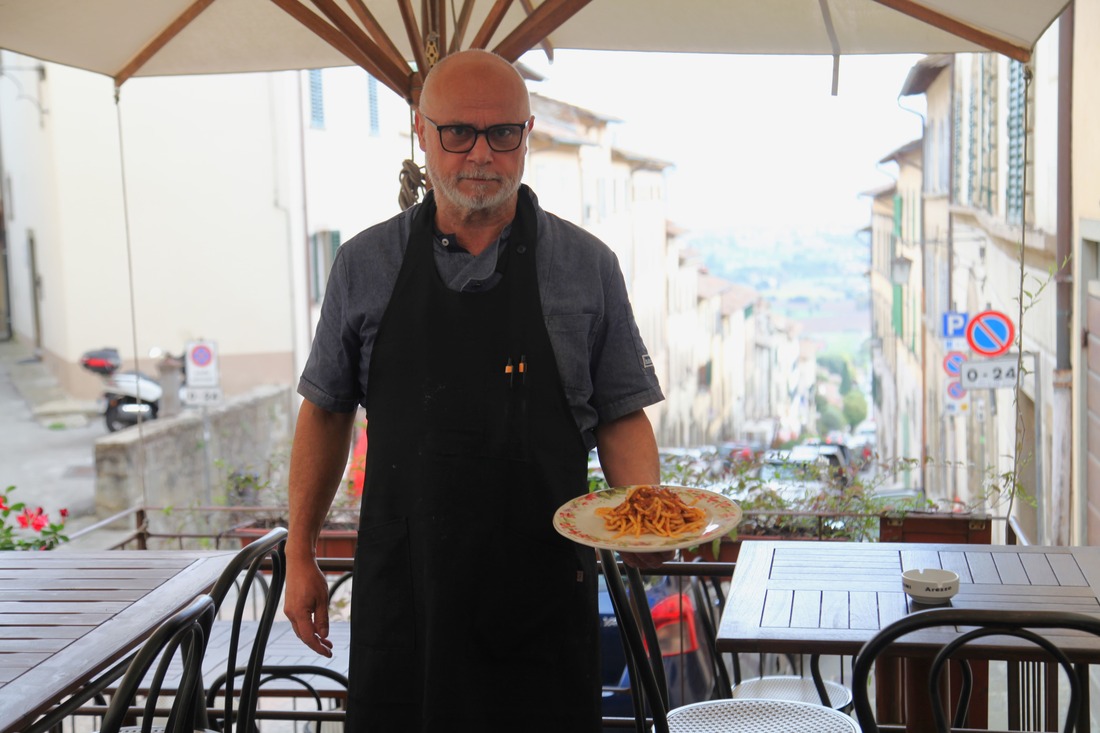By Simone Bandini
It is increasingly difficult to find the authentic taste of Tuscan cuisine. Yet, when I return to the Tiber Valley, which is my land, I know that Sergio is able to make me relive memories and snapshots of a past that has now been lost. That of the ‘grandmothers’, of Sunday lunches with the family, of suspended time and the typical cuisine of this border countryside. Here at the La Nena restaurant, on the top of the ‘ritta’ (slope) of Anghiari, you can taste the real ‘bringoli al sugo finto’, mushrooms and truffles with sumptuous cuts of fresh pasta or a compendium of grilled meats, tartare and Florentine steaks.
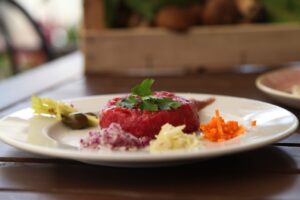
It is always difficult for me to find the feelings of my childhood: perhaps because I have changed, and with me also the people I once knew. I believe, in any case, that the last decades have seen a marked homologation of local cuisine, as well as excessive experimentation, wanting to look for novelties and sophisticated menus at any cost to meet the ephemeral fashions of communication and prevailing fashion. What has really changed in recent years?
We ask Sergio himself, a historic interpreter of the Anghiari and Tuscan gastronomic tradition by extension. As well as a sincere friend – and that’s not a detail.
VALLEY LIFE: Has the restaurant undergone an evolution in recent years? Have you added new dishes or changed the setting of the restaurant?
SERGIO CAPPETTI: The philosophy has changed mainly because of the pandemic which has created a structural change in habits, including food: we have downsized the dishes (without exaggerating eh!), in general all catering has become ‘restricted’. We focused on what are the most significant courses of our history, those that really represent our identity. Every now and then we insert something new off the menu, but otherwise our traditional proposal has remained so. The idea is to always do better the things we already know how to do, rather than necessarily changing.
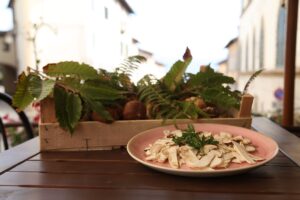
V.L.: So, what are the dishes that you would define as the most representative of the restaurant?
S.C.: We remain attached to typical and ‘robust’ dishes: bringoli, mushrooms, truffles, hunting pies, grilled and Florentine steaks. Then there are dishes such as tripe and snails, which are part of the typical tradition of both Tuscany and Anghiari. In short, our cuisine has remained strongly anchored to the classic regional memory.
V.L.: Have you introduced new processes? I am thinking, for example, of risottos.
S.C.: We haven’t turned anything upside down. On request – you remember well – we prepare risottos or other dishes desired (or of which vagueness stings, ed.), but no revolution has been made in the menu. Rather, we prefer to devote ourselves to perfecting our typical dishes. Of course, from time to time we offer some off-paper elaborations, but the basis is still our history at the table.
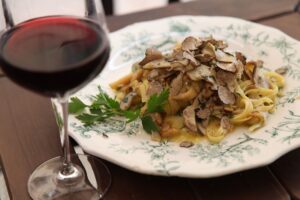
V.L.: How have the guests of your restaurant changed over the years?
S.C.: The usual aficionados continue to come. As for foreign customers, it has been somewhat downsized: there is less general influx than in the past. However, we see more Spaniards and French than in the past. Anghiari remains a strongly Tuscan reality, a pole of attraction for those looking for authentic cuisine.
V.L.: How does Anghiari differ from the neighbouring territories?
S.C.: Anghiari is Tuscany, in the true sense of the word! This true ‘Tuscanity’ is immediately perceived, on the skin, both in the dishes and in the way of interpreting raw materials and ingredients. Of course, there is a certain ‘transhumance’ or if desired fusion with the cuisine of the neighbouring regions – Umbria, Marche, Romagna – but the dish and the spirit typically remain the same.
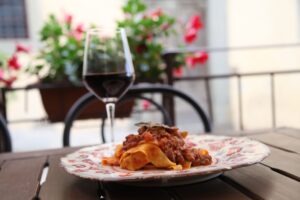
V.L.: You grew up in Casentino, right? How much does it affect your cooking choices?
S.C.: Yes, I’m from the lower Casentino. The origin matters a lot: mine is a local cuisine, made with local ingredients and traditions handed down. Being from Casentino brings with it practices and flavours that then manifest themselves in the dish – and that my most loyal guests and friends appreciate.
V.L.: What is the most popular dish in your restaurant?
S.C.: The most successful dish is, without a doubt, Bringoli with the so-called “fake sauce”. It is one of the richest and most luxurious dishes, much appreciated by those looking for strong and authentic flavours, typical of the local cuisine.
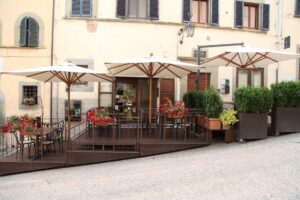
Info: Via Giacomo Matteotti 10/14, Anghiari (Ar) / www.ristorantenena.it / Tel. 0575 789491
